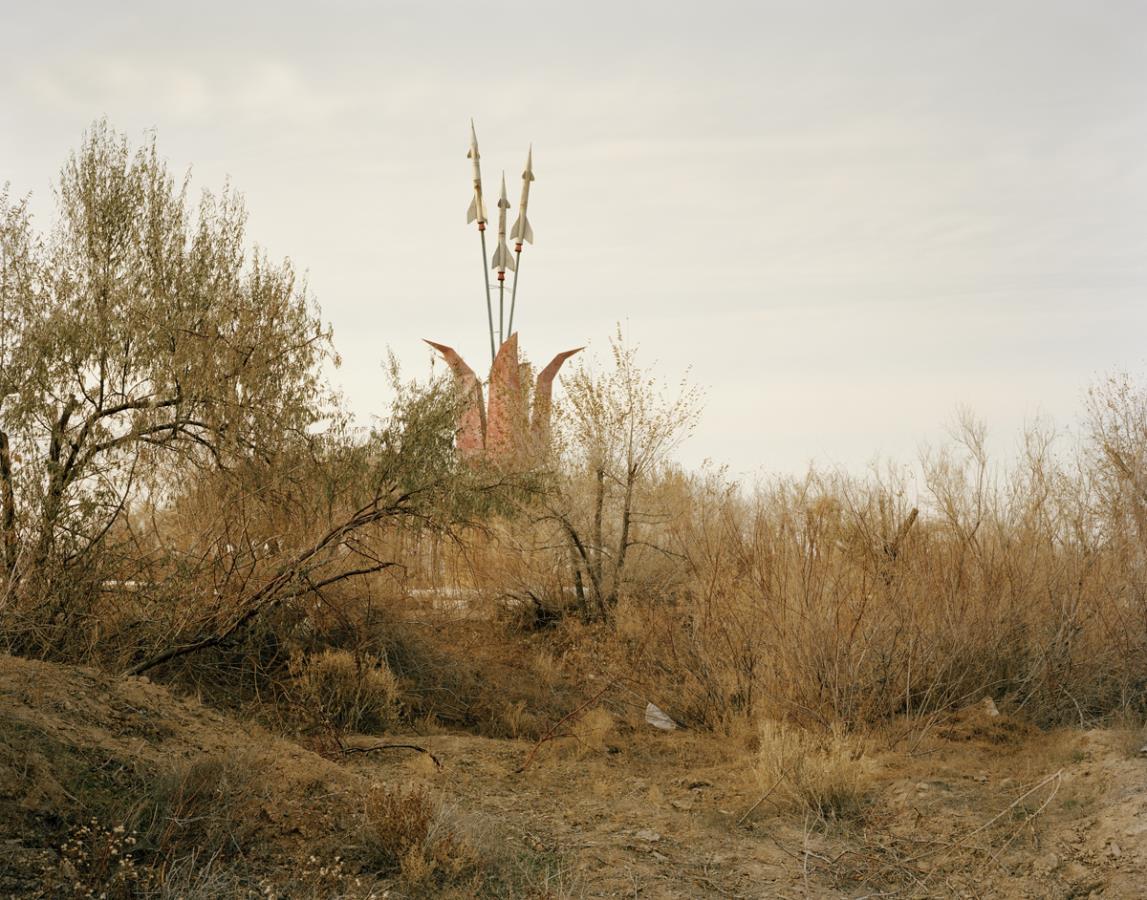Though it played out on the international stage, the arms race between the United States and the USSR took place mainly in rural, isolated parts of the world. The Americans tested their nuclear bombs on a desolate patch of Nevada. The Russians chose a barren polygon-shaped patch of what is now Kazakhstan.
The photographer Nadav Kander was arrested twice while visiting this so-called Polygon — aka the Semipalatinsk Test Site, a desolate area as big as New Jersey where the USSR detonated almost 500 nuclear bombs between 1949 and the fall of the Soviet Union. Kander was visiting to shoot his latest book, Dust, which documents the places where Russia set up — and later abandoned — its nuclear program.

In some cases, scientists build faux-towns and structures to test the impact of their bombs. In other cases, the towns were real, because the Polygon wasn’t actually remote at all. In fact, it was quite close to human settlements, including the formerly closed city of Kurchatov, where The New York Times says Kander was arrested. By setting up the Polygon, the USSR set off a generations-long legacy of explosive cancer rates, birth defects, and other health problems in Kazakhstan, as io9 described last year.
And as the CTBTO explains, the people who lived there were, for all intents and purposes, part of the experiments:
They were normally told to refrain from lighting their iron cooking stoves when testing was taking place in case the fire flared back into the house. They were also warned to stay outside when an explosion was scheduled, since it might topple their house. Historical accounts of residents who were schoolchildren before 1962 indicate that windows were blown out of their schools and that their bodies convulsed when testing occurred.
The area became a closed, secret place which was only “put on the map,” so to speak, by the advent of satellite intelligence. Today, you can visit the area with the help of specialised tour outfits.
Though the testing is over, the Polygon still poses a threat to the world today. Because so few records were kept of the test sites, and because of the fall of the Soviet Union and rocky transition into present-day Kazakstan, radioactive material still litters the area. According to the Bulletin of Atomic Scientists, the area was so saturated with plutonium and radioactive material, it would have been possible to make a dozen more bombs. And there it lay, free for the taking for anyone willing to look for it.


So for 17 years, a coalition of American, Russian and Kazakh scientists worked on a top-secret mission to map, uncover, and secure the dangerous evidence of the Polygon’s former life as the test bed for the USSR’s nuclear might. That is a story unto itself — and in fact, it’s already been written: Plutonium Mountain: Inside the 17-Year Mission to Secure a Legacy of Soviet Nuclear Testing. Despite the $US150 million effort, the area is still highly contaminated (though more secure), and the people who live near it are still struggling with the legacy of the tests, which will likely endure for generations.

You can check out Dust on Amazon, or see the images until October 11 at Flowers Gallery.
All images copyright Nadav Kander, courtesy Flowers Gallery London and New York.
